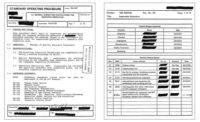Management
Lean ISO Management Systems Save Big Money
A company of some 500 employees could save some half a million dollars a year on training using Lean management system documentation.

Image Source: mphillips007 / iStock / Getty Images Plus
If you thought that there are no money trees around anymore, think again, and keep looking. Those trees may be right next to you; just put your Lean glasses on.
This article shows how a mid-sized business can save one hundred, two hundred, three hundred thousand dollars a year or more using Lean ISO management system documents. Can you guess how much a company of 500 employees spends per year on training? Nor sure? Keep reading; I will surprise you.
Problem
While numerous publications talk about the burdens of the poor quality of typical ISO management system procedures, rarely, if at all, we can find analysis of costs related to poor documentation. This article closes this gap and explores how much it costs a company to deal with archaic documentation.
Solution
There are numerous examples of calculations of costs of quality in production and manufacturing: cost of quality, cost of poor quality, cost of good quality, and many others. One such method for modeling costs of quality is known as Iceberg. It mimics an iceberg image with visible and invisible parts. The top is the direct costs, and the invisible part below the water conceals the hidden costs. We can apply this model to show the costs of poor documentation. Direct costs of poor documentation include:
- Development,
- Processing,
- Review and approval
- Training, and
- Rework when corrections to documents are required.
Hidden costs may include:
- Diminished personnel morale due to the need to deal with messed up documents all the time,
- Increased delivery time due to rework,
- Additional data entry time,
- Costs associated with rush releases,
- Cost of the withdrawal of deficient procedures and others.
All these costs contain wasted time because each step takes longer for non-Lean documents. One of the easiest areas to show the benefits of lean documentation is training.
Methodology
Once I conducted a third-party ISO 9001 audit for a large logistics center distributing consumer products to wholesale centers and end-users. The first opportunity I noticed was the rewrite of the prehistoric, wordy, and over-documented procedures.
In response to my comment that it would be beneficial to upgrade the documentation, the quality manager replied that the company did not have time or money for such a project. I got curious and started digging to see if the company really did not have money to enhance its documentation. Just a few questions led to an interesting finding.
At the time of the audit, the organization reported some 487 employees on three shifts. The training folks indicated that their Learning Management System showed that each employee on average spent 50 hours in training year-to-date. This number is pretty much in line with the published average data for this size of an organization. So, by now, the company spent on training some:
50 hours per employee x 487 employees = around 24,000 hours.
A short excursion to the company’s annual report showed that average employee productivity was some $65 an hour, which also is well in line with the industry numbers. In this case, taking folks from work to training, the company lost employee input in the amount of:
dollars per hour x 24,000 hours = approximately 1.6 million dollars.
Training activities have different forms and curricula, with one of them being management system procedures. Let’s assume, very conservatively, that the company spent half of all these 1.6 million dollars on training against the procedures. Then, procedure training alone would cost the company:
million dollars / 2 = 800,000 dollars per year.
Now, let’s say we Leaned up our procedures by reducing the volume of our documents in half by cutting the number of words and pages in our procedures. Do not give me that “Oh yes, Sir” smile – it is effortless to do. I will show you a link below on how to do it: you will be surprised! Such a reduction in the volume of documentation means that we will spend half of the time on the same training or:
$800.000 / 2 = $400,000
Here is your answer to how much a company may spend on training.
Summary
Without a stretch, I believe this example proved that a company of some 500 employees could save some half a million dollars a year on training using Lean management system documentation. We can use this calculation approach to any size of the company. Training intensity will depend on the industry, but we can safely say that Lean documentation can save $1,000 per year per employee on training as a ballpark. It may not sound like much, but 100 employee company will save $100,000, 200 hundred - $200,000, and so on.
Looking for a reprint of this article?
From high-res PDFs to custom plaques, order your copy today!





